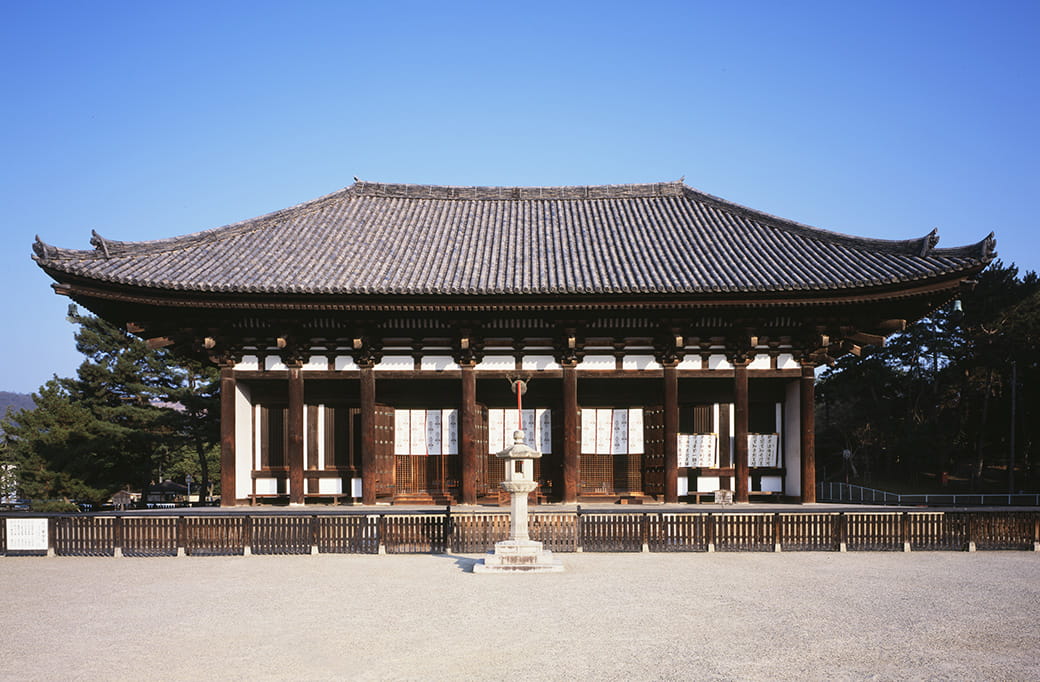Eastern Golden Hall
National Treasure

Historically, three Golden Halls—Central, Eastern, and Western— stood at the heart of the Kohfukuji temple complex. Of these, the Eastern Golden Hall was originally built at the behest of Emperor Shōmu (701–756) to pray for the convalescence of his aunt, retired Empress Genshō (683–748). Upon its completion in 726, a triad consisting of Yakushi Nyorai, commonly known as the Medicine Buddha, and his attendant Bodhisattvas Nikkō and Gakkō was installed on the central altar and surrounded by other images. In addition, the altar was lined with glazed green tiles to evoke the Pure Beryl Radiance Realm, the pure land of the Medicine Buddha.
Over the centuries, the Eastern Golden Hall was consumed by fire five times, most recently in 1411. The current hall was consecrated in 1415. Although technically a structure from the Muromachi Period (1336–1573), it intentionally employs archaic architectural features, such as a covered porch stretching the full width of the front face of the building, three-stepped bracket complexes supporting the rafters, a hipped (as opposed to a pitched) roof, and a tiled stone floor to evoke the aura of the original Nara-period (710–794) building.
Today, the Eastern Golden Hall enshrines an assemblage of images that provide a panoramic overview of the entire history of Japanese Buddhist art. These include the central icon, a copper-alloy image of Yakushi Nyorai cast in the Muromachi Period, copper-alloy images of the Bodhisattvas Nikkō and Gakkō (Hakuhō Era; late seventh century), Heian-period (794–1185) wooden images of the Four Heavenly Kings, as well as Kamakura-period (1185–1333) wooden images of Monju Bosatsu, Yuima Koji, and the Twelve Heavenly Generals.

